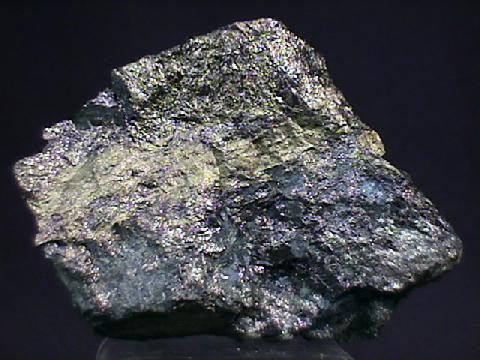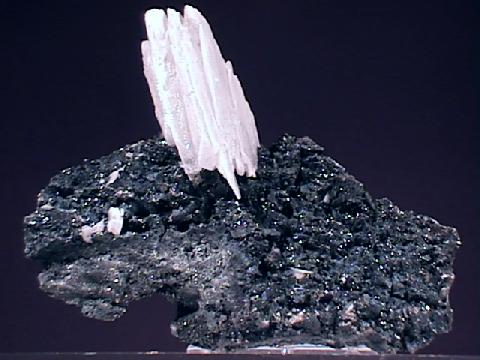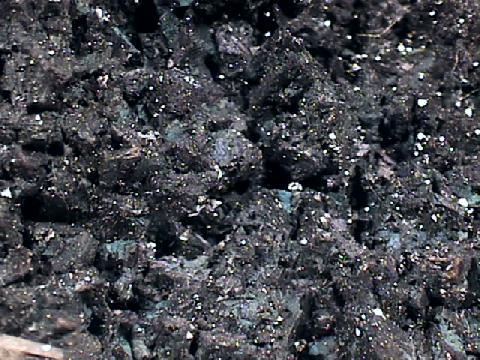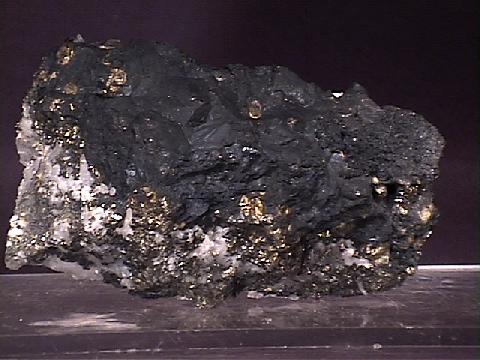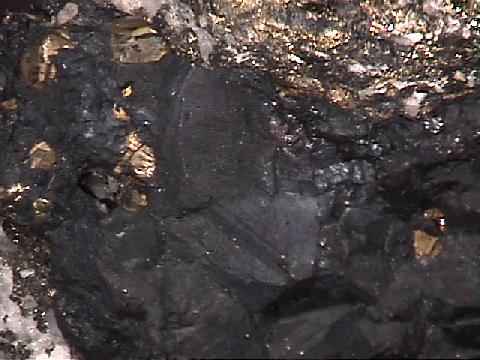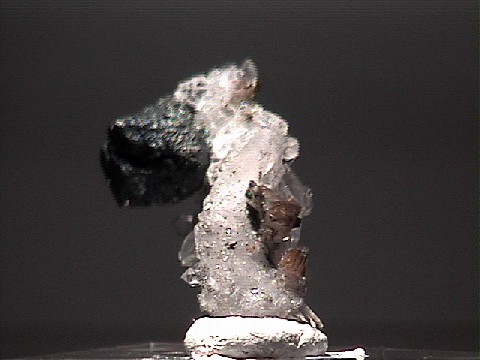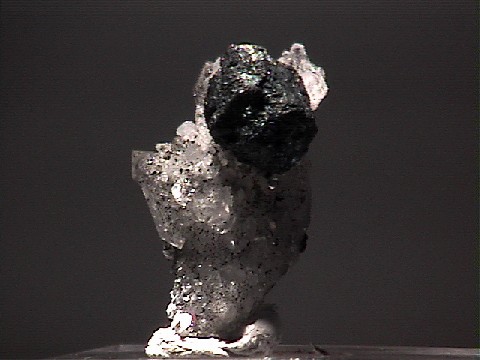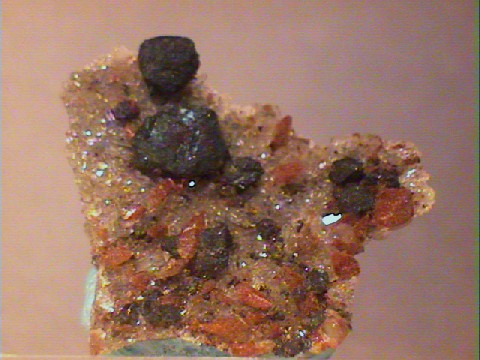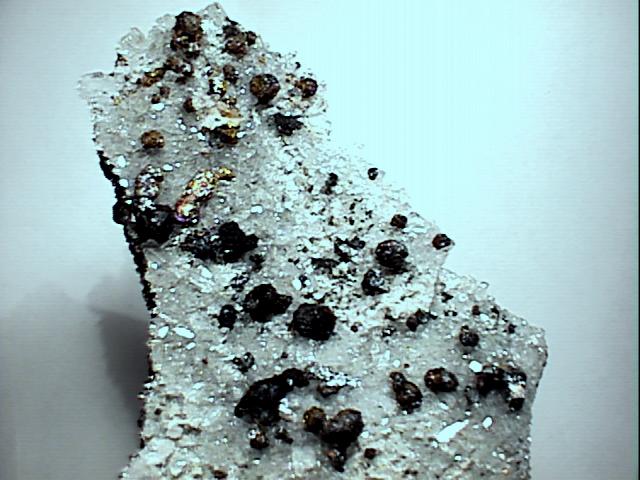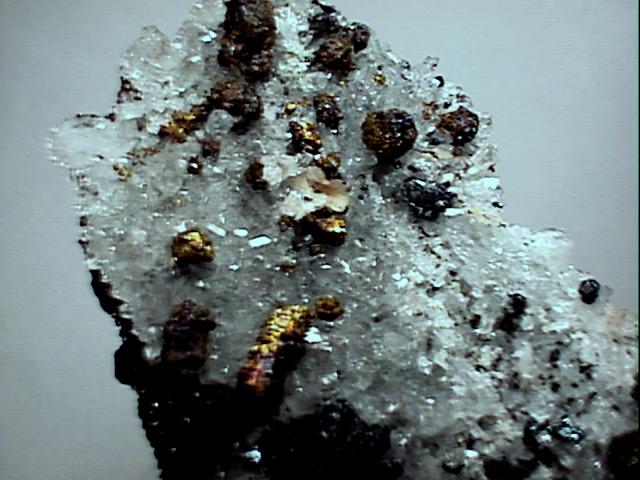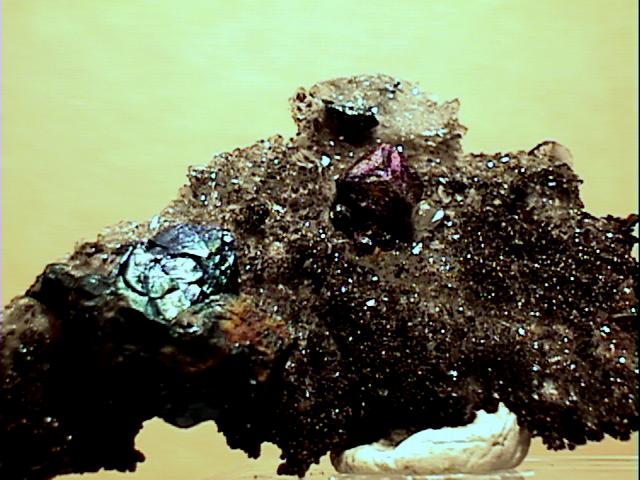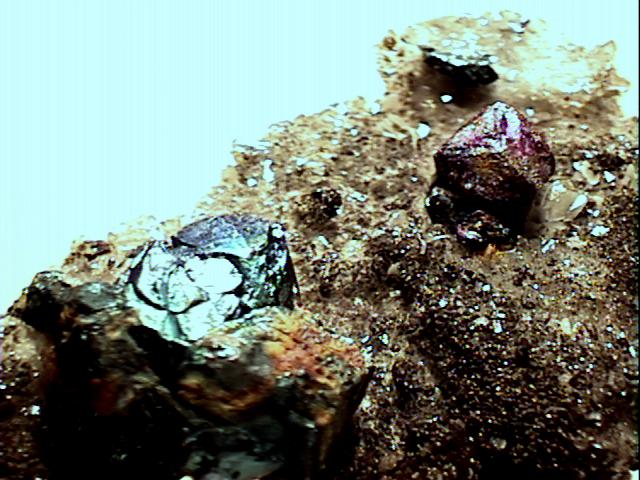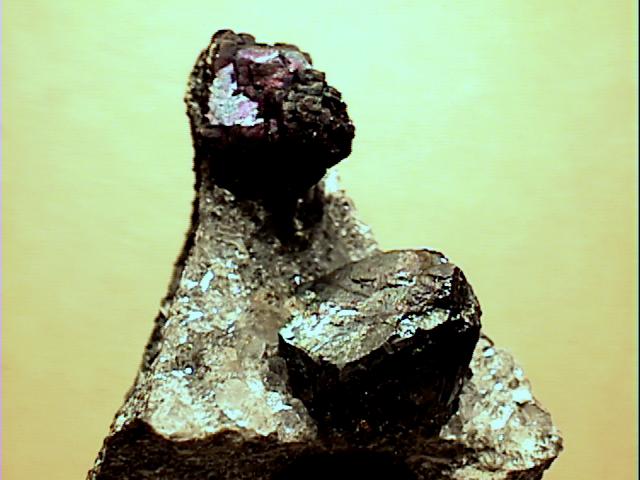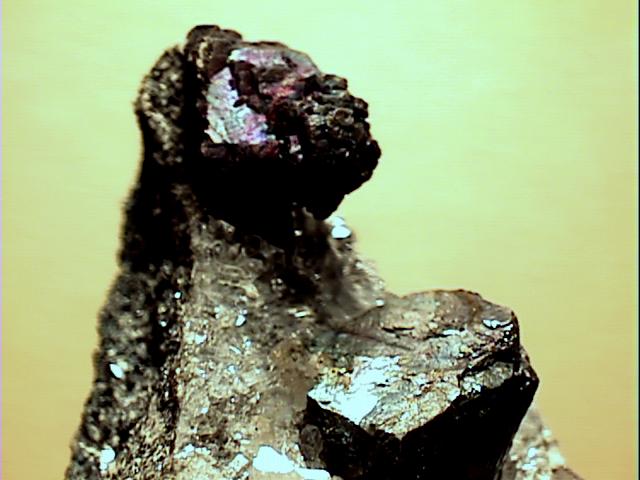 THE MINERAL BORNITE
THE MINERAL BORNITE
- Chemistry: Cu5FeS4, Copper Iron Sulfide
- Class: Sulfides
- Uses: Major ore of copper and as mineral specimens.
Specimens
It does however get used in the mineral trade as a curiosity called "peacock ore". A favorite among children, the bornite chunks sold as peacock ore or alternatively peacock copper have a rich bouquet of colors. The colors are from an iridescent tarnish that forms on bornite upon exposure to air. The tarnish is made of assorted copper oxides or hydroxides that form a mere atoms thin layer over the bornite. The thickness of the layers is close to the wavelength of light. When light waves bounce between the bornite surface and the top of the tarnish layer they will leave with the wavelengths of various colors. This effect is the same as the rainbow effect that occurs with oil on water. In the case of bornite, the tarnish will have a purplish, violet or blue color. Because bornite is often intergrown with chalcopyrite which tarnishes to more greens and yellows, the peacock ore may have many colors ranging from purple to blue to green to yellow.
Bornite's crystals, if found, are usually distorted cubes with curved faces.
Even rarer are the distorted octahedrons and dodecahedrons.
These are
PHYSICAL CHARACTERISTICS:
- Color is brown to black with a typical purplish-bluish tarnish, a reddish bronze color on freshly broken surfaces.
- Luster is metallic.
- Transparency: Crystals are opaque.
- Crystal System is isometric; 4/m bar 3 2/m above 228 degrees celsius but below this temperature its structure becomes less symmetrical possibly tetragonal; bar 4 2/m.
- Crystal Habits include rare distorted cubes and even more rarely dodecahedrons and octahedrons. Most common habit is massive or disseminated grains.
- Cleavage is very poor, octahedral.
- Fracture is conchoidal.
- Hardness is 3
- Specific Gravity is approximately 4.9 - 5.3 (average for metallic minerals)
- Streak is a gray black.
- Other Characteristics: The tarnish that occurs on fresh surfaces can form in only hours and will become black over time.
- Associated Minerals are magnetite, chalcocite, chalcopyrite, covellite, pyrrhotite, pyrite and other sulfides.
- Notable Occurances include Bristol, Connecticut, Butte, Montana, Plumas Co., Colorado and Superior, Arizona, USA; Cornwall, England; Rhineland, Germany; Tsumeb, Namibia; South Africa; Morocco; Bolivia; Chile; Peru and Mexico.
- Best Field Indicators are lack of good crystals, tarnish, streak, color of fresh surfaces and associations.

